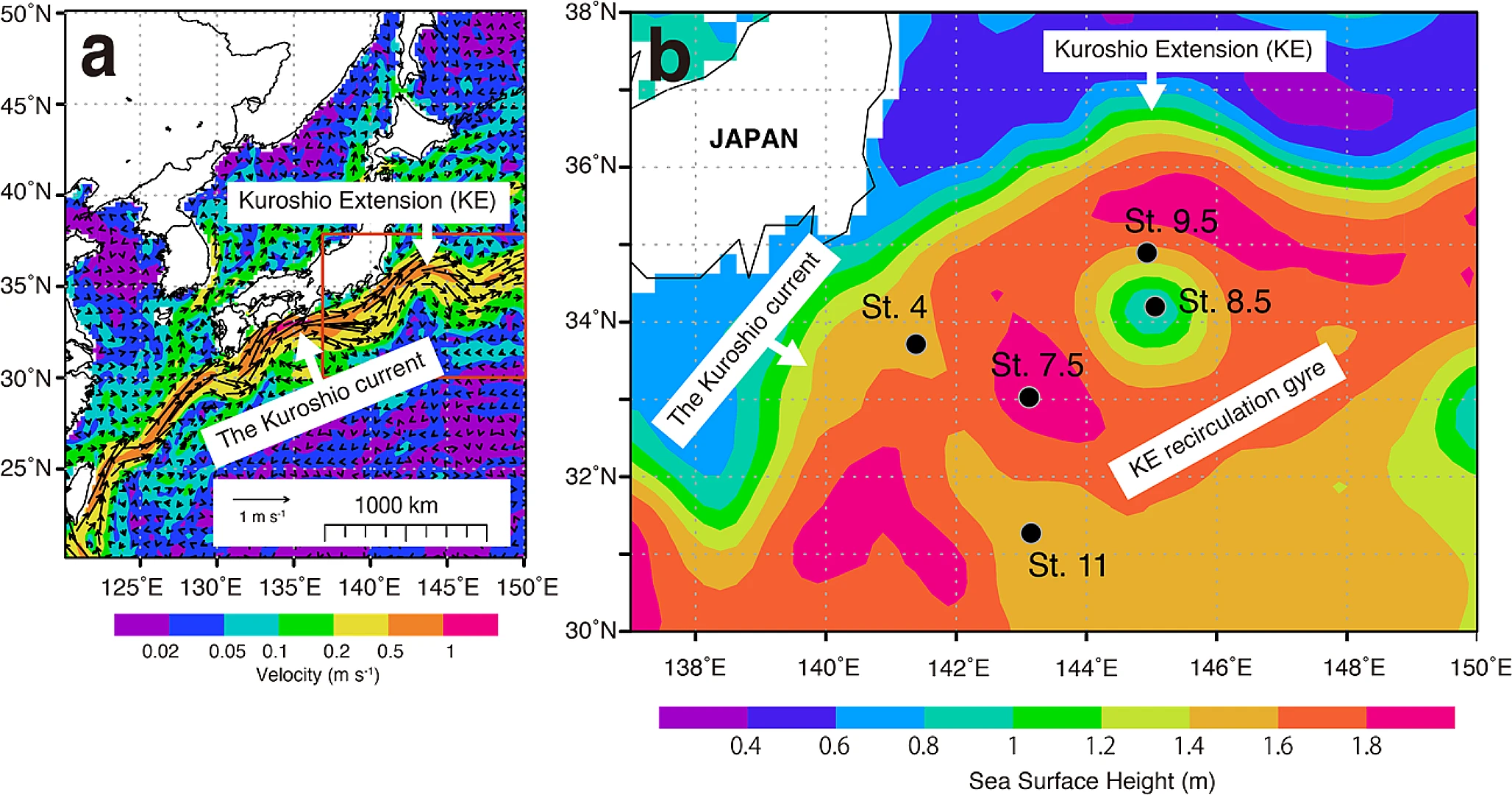Aggregation and transport of microplastics by a cold-core ring in the southern recirculation of the Kuroshio Extension: the role of mesoscale eddies on plastic debris distribution
Ryota Nakajima, Akira Nagano, Satoshi Osafune, Masashi Tsuchiya & Katsunori Fujikura
Published in Ocean Dynamics, August 2024
Mesoscale eddies – ocean vortices with spatial scales of tens to hundreds of kilometers and time scales of months to years – are among the most energetic forms of flow in the ocean, and may act as significant transporters of floating microplastics. Yet, shipboard observation has thus far not clarified the abundance and transport of microplastics in mesoscale eddies. We conducted floating microplastic surveys in an intense cyclonic mesoscale eddy with a large sea surface height depression (approximately 0.8 m), a so-called cold-core ring, in the Kuroshio Extension recirculation gyre (KERG) southeast of Japan. The concentration of microplastics within the eddy (460 × 104 pieces/km2) was one or two orders of magnitude higher than in the adjacent oceanic waters, likely due to the acquisition of microplastics from the microplastic-rich Kuroshio Extension (KE) when detaching, as well as the horizontal entrainment of particles by the eddy. Our examination by using an assimilation product showed that most particles captured by the eddy remained within for several months while the eddy moved clockwise in the KERG. These results suggest that mesoscale eddies are of importance in the transportation and redistribution of microplastics on the ocean surface.

Fig. Maps of the study area. (a) The averaged Kuroshio and adjacent currents around the Japanese archipelago from 1993 to 2018. Color shades denote current speed (m/s). (b) Sea surface height (SSH) map (color contours, m) on 1 September 2019 and locations of the sampling sites (black circles). The Kuroshio and Kuroshio Extension (KE) are shown by a sharp southward increase in SSH, and the recirculation gyre is illustrated by a high-SSH (> 1.6 m) region. Panels (a) and (b) were generated using E.U. Copernicus Marine Environment Monitoring Service (CMEMS) dataset at a horizontal resolution of 0.25° × 0.25° (Global Ocean Gridded L4 Sea Surface Height and Derived Variables Reprocessed (1993-ongoing))
Nakajima, R., Nagano, A., Osafune, S. et al. Aggregation and transport of microplastics by a cold-core ring in the southern recirculation of the Kuroshio Extension: the role of mesoscale eddies on plastic debris distribution. Ocean Dynamics (2024). https://doi.org/10.1007/s10236-024-01635-6